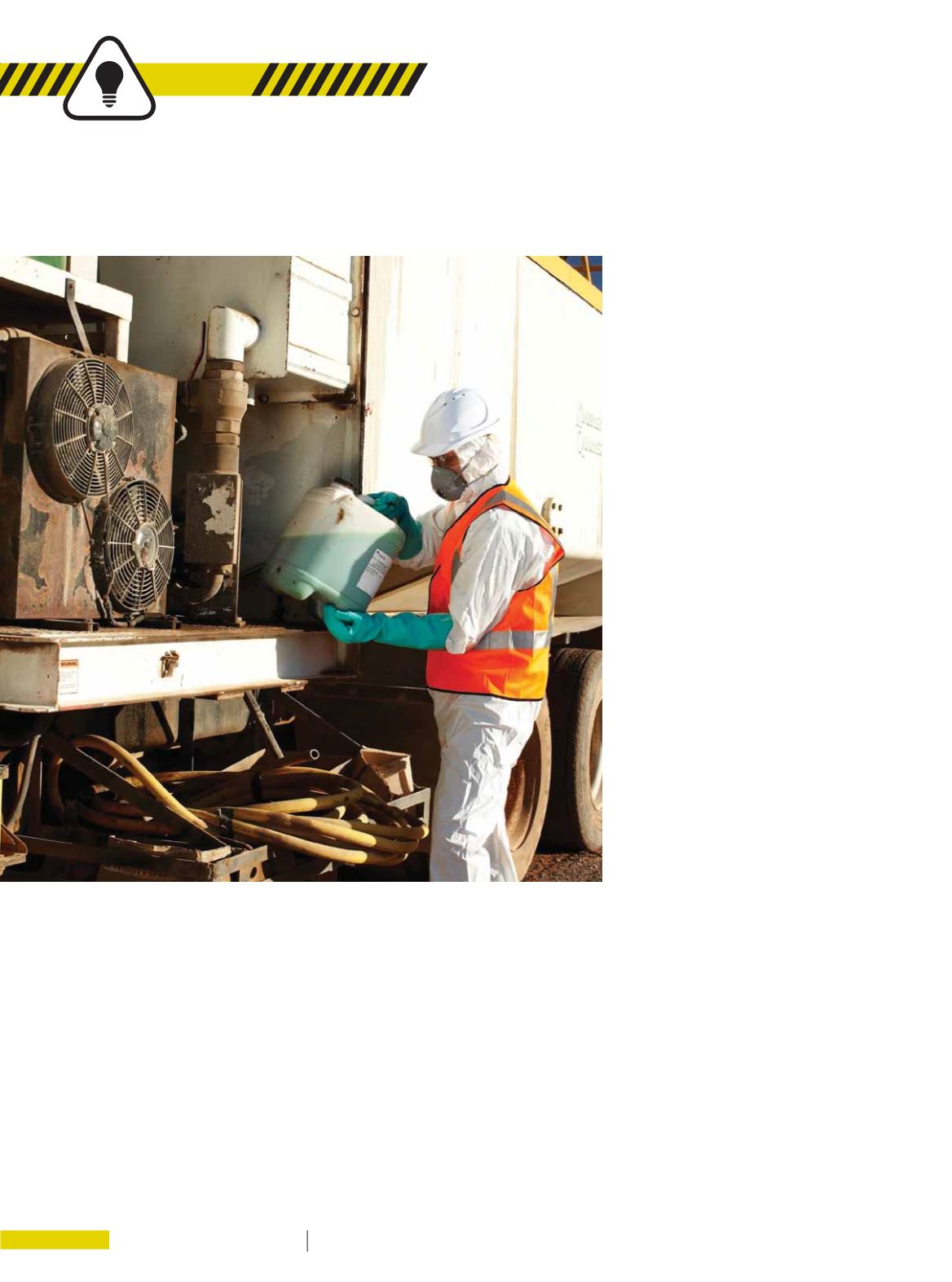

8 0
E L E C T R I C A L CO N N E C T I O N
A U T UMN 2 0 16
TIPS
P
rotecting workers’ hands from
chemical hazards can be a
complex challenge due to the
variety of chemicals and gloves with
different protective properties.
ProChoice Safety Gear product
development manager Brad Rodgers
says that hand protection from
chemicals requires a detailed
risk assessment of the chemical
concentration and exposure time along
with knowing the age of the gloves, their
history, testing them before use and
ensuring they are tested to Australian/
European Standards (see below), as
well as being a good fit.
“Chemical concentration will have
a huge influence on the breakthrough
time [how long it takes for the chemical
to breach the glove] while exposure
time must also be carefully managed,”
Brad says, adding that other factors
influencing glove choice include the
temperature of the chemical or material
being worked on, along with the
frequency of the glove’s use.
He suggests that specific advice
should not be relied upon unless it
comes from the manufacturer of the
chemical in question.
“Knowing exactly what is in the
chemical and the concentration levels
plays a big part in the protection
required,” he said.
“Material safety data sheets are
available from the outlet that sold the
chemical or you can usually download
them from the manufacturer’s website.”
MATERIAL AND FIT
Brad states that matching the
material of gloves – whether nitrile,
PVC, latex or neoprene (see overleaf)
– with the above factors is an essential
part of the PPE identification process,
with thicker gloves not necessarily
offering better protection.
“Different glove materials react in
different ways to chemicals, so thickness
won’t play a big part; however, if it’s
a combination of risks – for example
chemical and abrasion, then glove
thickness could play an important role.”
That said, he cautions, if materials
handling is also involved a thicker
glove can reduce the feeling and grip,
potentially increasing risk.
Brad emphasises the need for a
detailed risk assessment and states
that fit and comfort of a safety glove
is critical.
“It not only increases the likelihood of
the glove being worn, but also provides
better dexterity and feel. In the case of
chemicals, it can reduce the likelihood
of the glove slipping or the hand pulling
out of the glove and exposing the user to
hazards,” he says.
SPREADING THE GLOVE
With WHS playing such an
important role on jobsites
around the country, it is
important to get your head
around understanding chemical
resistant properties.
















